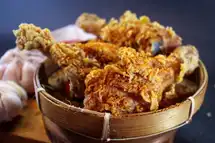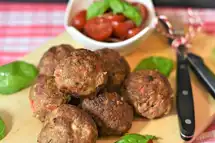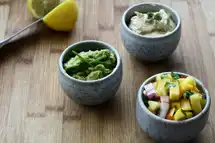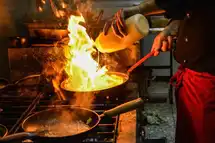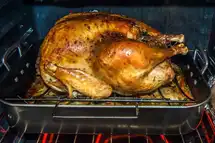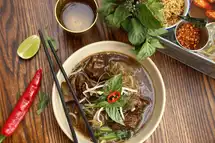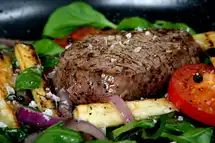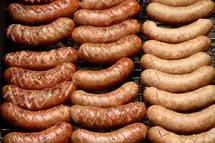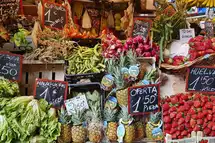What is a beef stew recipe?
A beef stew recipe is a dish made with beef and vegetables that is cooked in a stew pot.
Tender, Slow-cooked Beef Stew Recipe- The Perfect Dish For A Cold Winter Night
What is Beef Stew?
The dictionary definition of stew is "a dish of meat, fish, or vegetables cooked slowly in liquid in a covered container". While it is true that there have long been discussions about whether stew and soup are the same thing, it is incorrect to use the two terms interchangeably. Unfortunately, Restaurant News websites are often guilty of this mistake.
The dictionary definition of soup is a liquid food made by boiling meat, vegetables, and so on in water, and often eaten as the first course (appetizer) of a meal. In contrast, a stew is a full meal served with side dishes.
It's not easy to pinpoint the exact genesis of stew. However, some speculate that the discovery of fire inspired the idea of combining ingredients in a pot, or perhaps more precisely when prehistoric people learnt how to use that fire to cook.
The earliest known evidence of stew dates back to the Jomon period in Japan, thousands of years ago. Then, Amazonian tribes used seashells as vessels, boiling the entrails of turtles and other ingredients in them.
What's The Best Way to Cook Beef Stew?
Beef stew is a hearty dish traditionally made with pieces of meat that are first seared or browned before a flavored base (sometimes browned flour, stock and red wine) is added.
The process is almost the same, regardless of which recipe you choose to follow. The constituent elements of beef stew are diced or sliced beef, vegetable oil, butter or olive oil, onions and carrots, and other vegetables of your choice. The meat is browned in the fat with the onions and carrots before the liquid is added to cover them. The dish is then left to simmer until tender. The liquid can be beef broth or beer, depending on the recipe. Some stews use both, with great results. Flour can be added later to thicken the sauce, or barley or dumplings added during cooking to bulk out the dish.
It would help if you used these tried and tested tips recommended by food experts if you want to cook the perfect beef stew at home-
- Brown the beef and caramelize it to impart a savory flavor to the dish.
- Brown the beef in batches. Do not overcrowd the skillet. This will ensure that each piece will have enough space to caramelize perfectly, and you won't end up steaming the meat.
- Use the same pan to make the stew.
- When preparing this stew in a crock pot, add all the ingredients and opt for the slow cooker setting, cooking on low heat for two to three hours. Tenderize the meat with a fork if necessary and test after two hours. If the meat is not yet tender, continue cooking until it falls apart.
- If you are bulking up your dish with vegetables, add them towards the end so they don't get too soft.
It's cold outside. You're hungry. You want something hearty, tasty, and easy to make.
You can't find the recipe you need. It's a cold night and you don't want to spend hours in the kitchen slaving over a hot stove.
How to Buy the Best Beef for Your Stew
The butcher's shelves can be intimidating, especially to new chefs, with some stores carrying more than sixty beef products. Each cut has a specific function and cooking purpose. Once you familiarize yourself with beef cuts, a whole new world of cooking will open up. While choosing the right cut for your recipe may seem difficult, Food Industry experts believe that knowing the basics can help make the process easier.
Cuts of beef differ in flavor and texture depending on where they come from. To optimize both, you need to match cooking techniques with the composition of each particular cut. For instance, a cut from brisket, a highly-exercised area, has many connective tissues. Therefore, long, slow cooking methods are best for breaking the tissue down to make it tender. On the other hand, cuts from the loin are lean and delicate and require quick cooking over high heat.
Also known as braising steak or gravy beef, chuck steak is the most common stew meat. From the forequarter of the animal, beef chuck consists of portions of the upper forelimb, neck and shoulder blade. It is affordable and easily available, making it ideal for stew. Because it has high levels of connective tissue, chuck releases a great deal of gelatin into the stew as it cooks, making the meat moist and flavorful. In addition to connective tissue, it contains a good amount of marbling and low external fat.
The flank steak (also known as London broil or skirt steak) is another popular cut for stew. It comes from the abdominal muscles of the animal, right behind its chest. The muscle tone gives flank steak a chewier texture than other steaks. Other preferred options are cross-cut shanks, round roast and short ribs.
Ingredients for Your Slow-Cooked Beef Stew
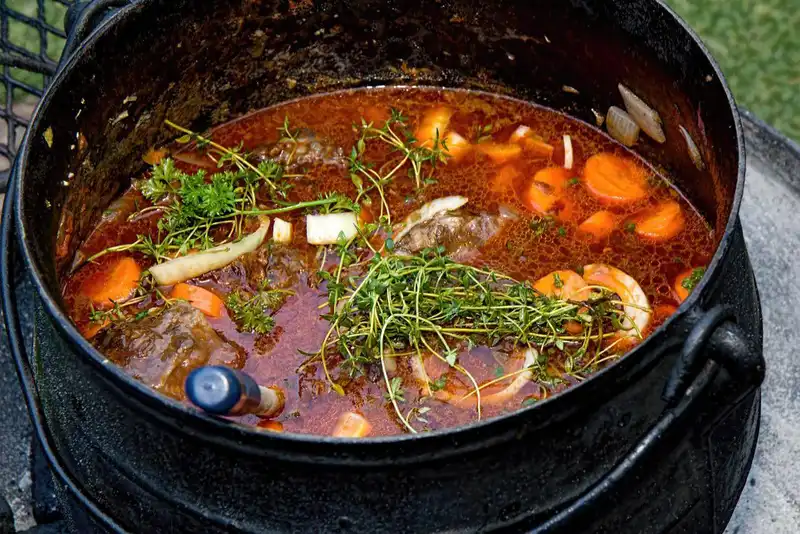
This recipe follows the slow cooker beef stew method for really tender meat. Here are the ingredients for a serving of four-
- 900g beef for braising (cut in big chunks or diced)
- 1 finely chopped onion
- 2 finely chopped celery sticks
- 2 bay leaves
- 2 teaspoons rapeseed oil
- 3 diced carrots
- 1 teaspoon thyme
- 1 cup tomato puree (50 g)
- 2 teaspoons Worcestershire sauce
- 2 beef stock cubes or stock pots
- 2 teaspoons cornflour (optional)
- A small bunch of fresh parsley (chopped)
- Salt and pepper (to taste)
Steps to Making Your Slow-Cooked Beef Stew
1. Heat the oil (one teaspoon) in a frying pan and fry the onion and celery for about five minutes until they soften. Add the carrots, bay leaves and thyme; fry for two minutes. Pour in the tomato paste and Worcestershire sauce, add 600 ml boiling water, stir well and transfer to a slow cooker.
2. Crush the stock cubes, add the stock pots, and season with pepper. Do not add salt as the stock may be salty.
3. To brown the beef, add the rest of the oil to the frying pan and fry it in batches until it is well browned. Transfer each set into the slow cooker one after another; cook on low heat for eight to ten hours. If you prefer to speed up the process, cook on high heat for four hours.
4. To thicken the gravy, mix two teaspoons of cornflour with two teaspoons of cold water until smooth. Combine two teaspoons of liquid from the slow cooker. Pour it back into the slow cooker. Cook for a further thirty minutes on high flame, then stir in one tablespoon of chopped parsley. Serve with your choice of side dish. Leave to cool before refrigerating.
It's winter. You're cold. You want some good food, but you don't want to spend hours in the kitchen.
We have the perfect recipe for you- a hearty beef stew that can be made in under an hour and is sure to warm up your soul.
Best Beef Stew Accompaniments
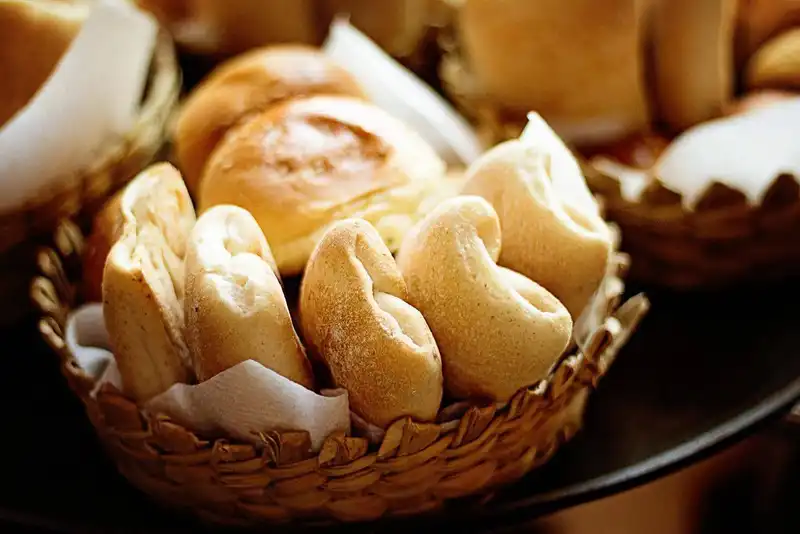
The side dish you serve with an entree can transform the entire meal's flavor profile. A good example of this is beef stew. Beef stew is unexpectedly versatile, and the side dish you serve with it can completely change the vibe of the meal. However, a good side dish should complement an entree's flavors and textures, be it a simple plate of boiled potatoes or a hearty bowl of homemade bread.
Here are five dishes that make for a good accompaniment to beef stew-
- Garlic Crescent Rolls- Garlic is a good complement to most dishes, and beef stew is no exception. Cheese-stuffed crescent rolls go well with leftover stew, saving you the effort of making different side dishes. This recipe is also simple to prepare in an air fryer.
- Crusty Bread- This crusty-on-the-outside, chewy-on-the-inside bread is a great accompaniment to a hearty beef stew. Just slather it with butter or olive oil, and you will have a perfect companion to your meal. You can also hollow out the loaf and use it as a bread bowl. This bread is made with ingredients that you probably already have in your kitchen, saving you a trip to the store.
- Mashed Potatoes- Beef stew is comfort food that makes for an excellent holiday meal. To make it more hearty, serve mashed potatoes as a side. Garlic and butter add flavor to smooth, buttery potatoes. Give it an extra edge by adding whatever seasoning and herbs you want. Finally, make mashed potatoes with beef stew gravy drizzled over them for an easy, delicious side.
- Sweet Cornbread- Cornbread is the ideal accompaniment to beef stew if you like to mix sweet and savory flavors in your meals. It is good for dipping, and its southern roots give your meal a distinctive south-of-the-border feel. Cornbread is one of the classic southern staples; no southern cookout would be complete without a plate or two of this slightly sweet side dish enjoyed for breakfast, lunch, and dinner.
- Roasted Cauliflower- While a beef stew complements a slice of buttered bread nicely, it's not always the best choice for a low-carb meal. If you prefer cauliflower as a substitute for potatoes or other grains in your diet, try oven-roasted parmesan-covered cauliflower florets. It is served with gravy, and it gives your meal the flavor you crave without the carbs you want to avoid. It is also quick to make, thus making it easy to feed a large crowd.
Cooking Tips and Tricks
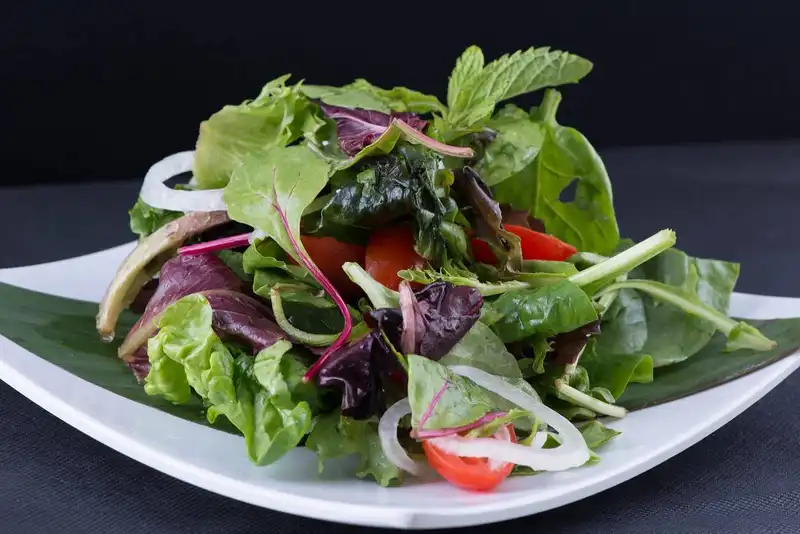
If you're on a budget, stew is the perfect alternative to expensive cuts of meat, like sirloin. Stew allows you to go for cheaper, tougher cuts. (Social Media influencers may tell you otherwise.) But the long cooking time for beef stew leaves leaner meats tough and chewy, while tougher cuts break down and become tender. So stick with chuck meat for stews.
When making stew, do not simply add raw meat to broth and expect the dish to be delicious. Stews take time to develop their flavors; remember that you're not using an instant pot recipe. Also, when browning meat for stew, don't lightly brown it. Searing is important for building a deep and rich flavor in the final product.
A cast iron casserole with high edges will give you an error-free dish. Cast iron allows slow and uniform cooking that softens the meat. Slow cooking over a low flame is always effective. A covered saucepan ensures that the heat remains inside, while the moisture generated helps with cooking. Remember that stew needs time.
Using aromatic herbs in stew results in a fragrant and flavorful dish. The most common dried herbs are thyme, sage, oregano, rosemary, and bay leaf; fresh herbs include parsley, chives and basil. You can also try cilantro, cumin or a cinnamon stick to experiment with new aromas.
You can bulk up your stew with more vegetables. But add them towards the end, so they don't get too soft.
- Add greens to your stew. While delicate greens like spinach and lettuces won't hold up when cooked, you can opt for Swiss chard, kale, beet, turnip greens, or collard. They will last long enough to bring freshness to the pot.
- Root vegetables add substance to stews. They add body and become tender and velvety soft as they cook. Carrots are the most commonly used root vegetable in these dishes, but look beyond them to parsnips, turnips, rutabaga (also known as swede), celeriac (also known as celery root), and sweet potatoes for more variety. Cut larger vegetables into smaller pieces, so they don't dissolve into mush when cooked.
- Mushrooms add meatiness to stews, both in flavor and texture. They soften up and soak up the flavor of stews while holding their form. Mushrooms can complement almost any beef stew.
Finding a good beef stew recipe that is easy to make and tastes amazing can be a challenge.
You don't have time to spend hours in the kitchen, but you still want to enjoy a hearty stew on those cold winter nights.












